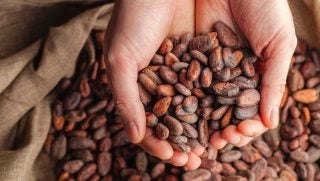For the first time in history, U.S. soil will leave Earth and travel to space to be studied. The commercial resupply mission to deliver food, supplies, equipment, and soil to the International Space Station will lift off on Sept. 29 at 10:27 p.m. EDT from the Mid-Atlantic Regional Spaceport at NASA’s Wallops Flight Facility in Virginia.
This is the first time that natural, unmodified Earth soil will be brought up into space. On the space station, researchers have used hydroponic planting systems, seeds placed in engineered growth media, and highly modified mineral soil, but this experiment will be different.
According to Cornell University, where the organic soil was selected from one of their farm plots, “Soil aggregates consist of particles that bind to one another for carbon sequestration, nutrient retention and soil aeration. Aggregation is considered a soil-health indicator that depends on fungal and microbial adhesives to bind mineral and organic matter.”
Since natural and biochar-containing soils have never been studied in space, scientists don’t know how they react without gravity. “We don’t know the role that gravity plays in driving soil biogeochemical processes,” Morgan Irons, a doctoral student in soil and crop sciences said. “We want to fundamentally understand the impact of gravity on fungal and microbial systems, within the context of soil aggregate stability.”
Astronauts won’t need to fumble with loose dirt in plastic containers and risk spilling it: It will be in 36 plastic self-contained vials, for a total of one-tenth of a pound of dirt from three experiments. One set will contain soil from around Ithaca, New York; another set will contain high-performance engineered soil containing biochar from the Ithaca-based company bio365, overseen by John Gaunt; the third set will be from Matthias Rillig, a professor at Freie Universität Berlin, Germany.
“This will be the first time that a soil ecosystem has left the confines of Earth and we study what it does,” said Johannes Lehmann, professor of soil science in the College of Agriculture and Life Sciences and principal investigator of the project. “This is a bit of a nerdy historic moment, but I’m very excited about it.”
While Irons knows this study likely will be a step to help future long-term space missions take humanity deep into the solar system and beyond, the gravity experiments could lead to better understanding of soil’s unique characteristics.
“Hopefully,” she said, “this experiment in space helps farmers down here on Earth, so that we all can thrive and live sustainably.”
Live coverage of the Sept. 29 mission countdown is scheduled to begin at approximately 5:30 p.m. EDT on the NASA Wallops Ustream site. Launch coverage on NASA-TV will begin at 10 p.m. EDT.


